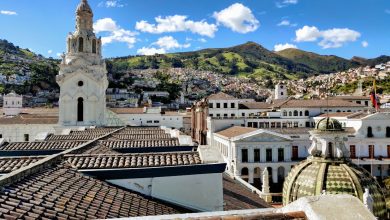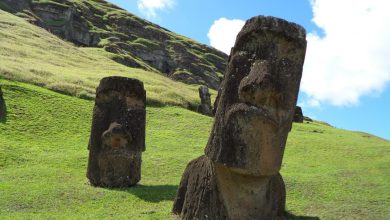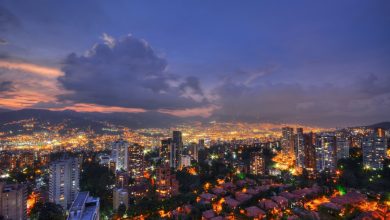Buenos Aires Travel Guide: Discover the Best-Kept Secrets of the City!
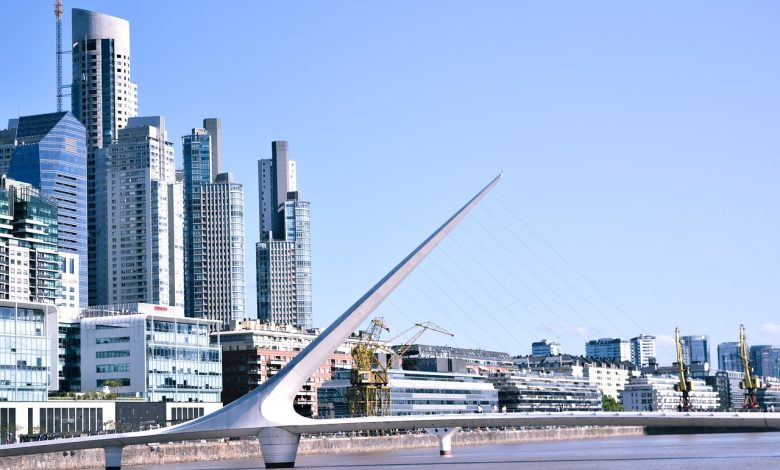
Embark on an unforgettable journey with our Buenos Aires Travel Guide, an immersive exploration into the heart of Argentina’s vibrant capital. Buenos Aires, often referred to as the Paris of South America, offers a tapestry of cultural experiences second to none. From the pulsating rhythm of tango that echoes through its cobblestoned streets to the sumptuous flavors of authentic Argentinian cuisine, every corner of the city promises a new discovery. Get ready to dive into the rich traditions, hidden gems, and the vivid art scene that make Buenos Aires a world-class destination. Whether you’re navigating through the lively barrios or seeking relaxation in its serene parks, our guide stands as your indispensable companion to uncover the best-kept secrets of the city.
Welcome to Buenos Aires: The Paris of South America
Buenos Aires, affectionately known as the “Paris of South America,” is a city where European grandeur meets Latin flair, creating a unique travel experience that is both vibrant and elegant. This bustling metropolis is the beating heart of Argentina and serves as an essential stop for any South American adventure. As you delve into this Buenos Aires Travel Guide, prepare to be captivated by the city’s rich cultural tapestry.
Architecture & Atmosphere
- European Influence: Stroll along the wide, tree-lined avenues and you’ll quickly notice the Parisian-style architecture gracing the cityscape. The stately façades and intricate designs are a testament to the European immigrants who shaped Buenos Aires’ early 20th-century look.
- Cultural Melting Pot: The city’s diverse neighborhoods embody the melting pot of cultures, with each barrio offering a distinct atmosphere. From the colorful houses of La Boca to the chic, boutique-lined streets of Palermo, each area has its own unique charm.
Arts & Culture
- Tango Everywhere: No Buenos Aires Travel Guide would be complete without highlighting the seductive dance of tango that is synonymous with the city. Whether it’s a spontaneous street performance or an elegant show at a historic milonga, the tango is ever-present.
- Artistic Flair: The abundant local art, ranging from classic galleries to urban murals, showcases the city’s artistic soul. You can spend days exploring, and still new wonders will unfold before your eyes.
To start your journey, here are a few initial tips:
- Language: While Spanish is the official language, many locals speak some English, especially in tourist areas.
- Currency: Argentina’s currency is the peso (ARS), and while credit cards are widely accepted, carrying some cash is advisable for smaller purchases.
- Weather: Buenos Aires has a temperate climate, with warm summers and cool winters. Plan your wardrobe according to the season to enjoy the city fully.
Embarking on your Buenos Aires adventure will surely be an unforgettable experience. As this Buenos Aires Travel Guide unfolds, prepare to immerse yourself in a world where tradition and modernity coalesce, creating an enchanting urban symphony that calls out to be explored.
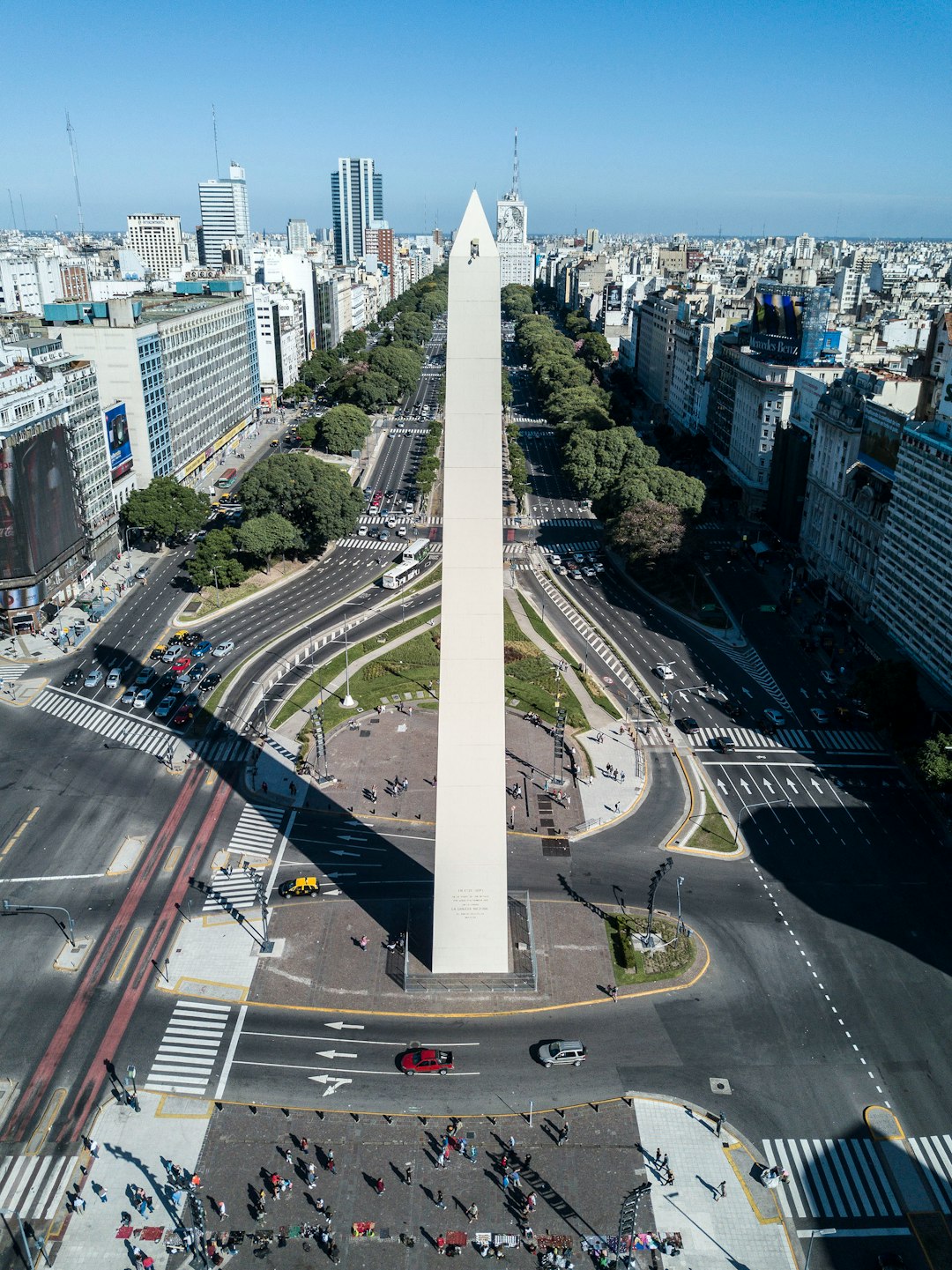
Exploring the Tango Culture: Where to Dance and Watch
When visiting Buenos Aires, immersing yourself in the deeply-rooted Tango culture is a must. This dance, synonymous with Argentine identity, tells a story of passion, history, and culture. This section of your Buenos Aires Travel Guide highlights where to experience Tango at its finest.
Milongas: The Heartbeat of Tango
Milongas are Tango dance events, and Buenos Aires boasts an array of them, ranging from traditional to more modern, relaxed settings. Here are the top spots to consider:
- La Catedral del Tango: Known for its bohemian vibe, this place offers a unique dancing experience in a setting that feels like a step back in time.
- Salón Canning: A traditional venue where experienced dancers showcase their skills, though beginners are welcome too.
- El Beso: A cherished spot for locals, it offers an intimate atmosphere, making it ideal for those who wish to observe and absorb the essence of Tango.
Tango Shows
If you prefer to watch professional performances while enjoying a meal, there are many venues offering dinner tango shows:
- Esquina Carlos Gardel: An elegant theater offering a spectacular showcase of dance and music, paired with traditional cuisine.
- Piazzolla Tango: Set in a beautifully restored theater, the performances here pay tribute to the legendary Astor Piazzolla.
Tango Lessons
For those looking to step into the dance themselves, many milongas and cultural centers provide classes:
- La Viruta Tango: A perfect spot for beginners and the tango-curious, offering lessons before the milonga starts.
- DNI Tango: Known for its progressive teaching method, it’s great for those who want to take their dancing to the next level.
As part of your Buenos Aires Travel Guide, it’s essential to respect the etiquette of milongas: wait for a nod (the ‘cabeceo’) to invite someone to dance and always move counter-clockwise around the dance floor. Whether you choose to watch or partake, Tango is a manifestation of Buenos Aires’ soul and a memory to treasure.
Hidden Gems: Off-the-Beaten-Path Attractions in Buenos Aires
When you whisk through the pages of a typical Buenos Aires Travel Guide, you’ll be pointed towards the grandeur of the Teatro Colon or the colorful streets of La Boca. Yet, for the ardent traveler yearning to uncover the essence of the city’s heart, stepping off the beaten path reveals a tapestry of hidden treasures. Delve deeper into Buenos Aires and discover enchanting spots that many tourists may miss.
Firstly, consider visiting the Pasaje Lanín: a vibrant alleyway adorned with mosaics that’s a real feast for the eyes. This living artwork is the brainchild of local artist Marino Santa María, and it’s a testament to the city’s creative spirit.
Another often overlooked marvel is Parque de la Memoria, a poignant and serene space that honors the victims of Argentina’s military dictatorship. The juxtaposition of somber history with the tranquil Rio de la Plata backdrop paints a starkly beautiful scene of reflection.
For those enchanted by antiquity, the El Zanjón de Granados beckons. Embark on a subterranean journey through centuries-old tunnels and remnants of homes that whisper tales of old Buenos Aires.
For a botanical retreat, the Jardín Botánico Carlos Thays, named after the famed French-Argentinian landscaper, offers a verdant escape nestled within the city’s hustle. It’s like stepping into a living green museum, with plants from around the globe.
Here’s how these hidden gems compare:
| Attraction | Highlights | Best For |
|---|---|---|
| Pasaje Lanín | Mosaic Artworks, Colorful Streets | Art Enthusiasts, Photographers |
| Parque de la Memoria | Monumental Artwork, River Views | History Buffs, Reflective Walks |
| El Zanjón de Granados | Underground Tunnels, Historical Tours | History Aficionados, Adventure Seekers |
| Jardín Botánico Carlos Thays | Diverse Flora, Peaceful Ambiance | Nature Lovers, Relaxation Seekers |
As your Buenos Aires Travel Guide takes you through these less-trodden paths, you’ll gain more than just photographs—you’ll acquire stories and experiences that strike a deeper chord. Embrace the unexpected and let Buenos Aires reveal its best-kept secrets to you.
Culinary Delights: A Taste of Authentic Argentinian Cuisine
When diving into the heart of Argentine culture, an essential chapter in your Buenos Aires travel guide must spotlight the culinary delights that await your palate. Renowned for its rich flavors and hearty dishes, Buenos Aires offers an array of authentic Argentinian cuisine that is sure to tantalize taste buds.
First and foremost, Argentine beef is the star of the show. Known for its superior quality and flavor, trying a traditional asado (barbecue) is a must. Here are some quintessential dishes and where to find them:
- Asado: Visit a local parrilla (steakhouse) for the full experience, where you can savor a variety of grilled meats, including succulent ribs and chorizo sausages.
- Empanadas: These savory pastries can be found at nearly every corner of the city – look for ones with hand-cut meat for the true artisanal experience.
- Dulce de Leche: This sweet, caramel-like spread is a national obsession. Indulge in it with desserts or simply spread on toast.
- Malbec Wine: No culinary journey is complete without a taste of this bold red wine, perfect alongside a juicy steak.
Discover these gastronomic wonders at local markets, such as the historic San Telmo Market, or by exploring authentic neighborhoods like Palermo, where gourmet restaurants cater to the most discerning tastes.
For vegetarians, Buenos Aires has an ever-growing offering. Restaurants like Casa Munay serve inventive plant-based dishes that even meat-lovers would envy.
And let’s not forget about the national drink, Mate. This traditional tea is a social staple and provides insight into the Argentine way of life.
In your Buenos Aires travel guide, it’s essential to note that dining in the city is not just about sustenance; it’s an experience to savor. Take your time, enjoy the ambiance, and let the rich flavors of Buenos Aires lead you on a delectable journey through Argentina’s heart and soul.

Navigating the Barrios: A Local’s Guide to Buenos Aires Neighborhoods
When exploring Buenos Aires, understanding the distinct personality of each barrio, or neighborhood, is essential to fully immerse in the city’s culture. Our Buenos Aires Travel Guide takes a closer look at a few areas that should make it onto your itinerary:
- Palermo: Often considered the hipster haven of the city, Palermo is teeming with trendy shops, charming cafes, and an electric nightlife scene. It’s divided into sub-areas like Palermo Soho and Palermo Hollywood, each with their distinct vibe.
- Recoleta: Known for its refined culture, this area showcases classical French architecture, high-end boutiques, and the famous Recoleta Cemetery. It’s an ideal place for those seeking a luxury experience and fascinating historical sites.
- San Telmo: If cobblestone streets and a bohemian atmosphere are what you crave, San Telmo won’t disappoint. With antique shops and the bustling San Telmo Market, you’ll find a treasure trove of unique finds.
- La Boca: Home to the iconic Caminito street and the Bombonera stadium, La Boca’s vibrant painted houses and passionate soccer culture cannot be missed. It’s also the perfect spot to witness the tango danced authentically in the streets.
- Belgrano: A residential area with a more local feel, offering tranquility away from tourist hotspots. The Barrio Chino here is ideal for those looking to explore cultural diversity and enjoy some excellent Asian cuisine.
Navigating through Buenos Aires’ barrios, you’ll discover the city’s heart and soul. In each neighborhood, you will find a different story, a new flavor, and unique experiences that contribute to the richness of this metropolis. This Buenos Aires Travel Guide aims not just to inform but to inspire you to meander beyond the typical tourist paths and truly connect with the city’s vibrant essence. Remember that each barrio represents a piece of Buenos Aires’ multifaceted identity, waiting for you to explore and cherish.
Art and Soul of the City: Discovering Buenos Aires Street Art
Buenos Aires, known for its vibrant culture and European ambiance, also boasts an incredible street art scene that’s become an integral part of the city’s soul. A Buenos Aires travel guide is incomplete without diving into the colorful alleys and walls that reflect the city’s artistic heartbeat. Here’s how to discover the best of Buenos Aires street art:
- Explore Palermo: The neighborhood of Palermo is a canvas for local and international artists, displaying murals that transform buildings into open-air galleries. Strolling through Palermo reveals an evolving exhibition that is as spontaneous as it is thought-provoking.
- Discover the Street Art Scene in San Telmo: San Telmo, known for its antique shops and tango bars, also houses some incredible street art. Be particularly vigilant for artworks that incorporate characteristics of this historic barrio, blending the old and the new.
- Elaborate Murals of La Boca: The vivid Italian influences and the passionate spirit of La Boca make it a prime location for some of the city’s most elaborate murals. Wander beyond the tourist-heavy Caminito to uncover larger-than-life artworks that tell stories of community and resilience.
When incorporating this Buenos Aires travel guide into your street art exploration, here are some key points to remember:
- Guided Tours: Consider joining a guided street art tour to gain insights into the meanings behind the murals and stories about the artists who created them.
- Respect the Art: While photographing and admiring the street art, remember to respect the work and the neighborhood it’s in.
As a vital part of your Buenos Aires travel guide, discovering the street art is more than just an activity—it’s an opportunity to connect with the city’s dynamic cultural tapestry. These powerful expressions on the walls offer travelers a unique lens through which to view and understand Buenos Aires.
Shopping in Buenos Aires: Unique Finds and Local Crafts
For those eager to take a slice of the city’s culture back home, shopping in Buenos Aires offers a treasure trove of unique finds and local crafts. This Buenos Aires travel guide will point you to the spots where you can secure the most authentic souvenirs and gifts.
From High-end Boutiques to Traditional Markets
To start, the upscale neighborhood of Recoleta is dotted with high-end boutiques featuring local designers. In contrast, Palermo is the go-to district for avant-garde fashion and quirky home decor. Each shop in these areas reflects Buenos Aires’ flair for style and innovation.
Artisan Markets and Specialty Shops
- San Telmo Market: Browse through antiques and vintage items every Sunday in one of the oldest neighborhoods in Buenos Aires. It’s a place where history breathes through the cobblestone streets, and every stall and shop is a nod to the past.
- Feria de Mataderos: For a more traditional experience, visit this fair to find indigenous crafts, handwoven textiles, and regional foods. Here, the focus is on Argentine heritage and local artisans.
- Galerías Pacífico: Housed in a stunning Beaux-Arts building, this shopping center presents both international and Argentine brands, plus an entire floor dedicated to leather goods—Argentina’s renowned specialty.
What to Look for:
- Leather Products: Argentina is famous for its high-quality leather. From wallets to custom-made jackets, the craftsmanship is unparalleled.
- Tango Shoes: Tango enthusiasts can find custom shoes, which are not only beautiful but also crafted for the dance.
- Argentine Wine: Home to world-class vineyards, local wine makes for a tasteful gift or souvenir.
Tips for Shopping in Buenos Aires:
- Haggle in markets but respect fixed prices in stores.
- Shop during sale seasons (January/February and July/August) for the best deals.
- Bring cash for markets and small shops, as credit card usage may not be as widespread.
Remember, part of the charm lies in the pleasure of discovery. Take your time to explore, converse with shop owners, and understand the stories behind the items you purchase. This Buenos Aires travel guide is merely your starting point to uncovering the city’s diverse shopping landscape!
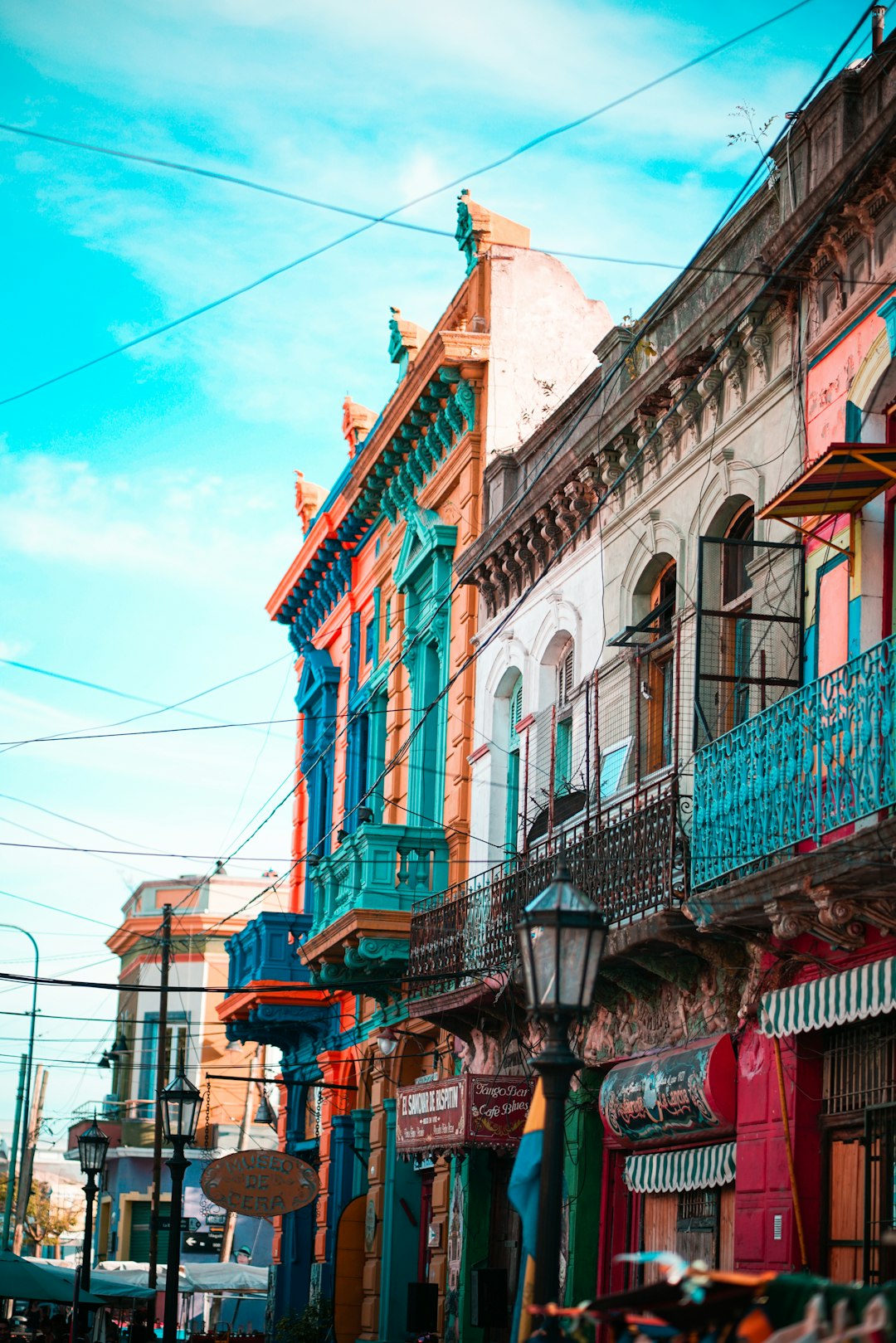
Relax Buenos Aires Style: Best Parks and Open Spaces for Leisure
Buenos Aires, often heralded for its vibrant culture and architectural beauty, also lends itself to moments of relaxation with its enchanting parks and open spaces. To really complement your Buenos Aires travel guide, carve out time to unwind in the city’s green jewels.
- Bosques de Palermo (Palermo Woods):
The Bosques de Palermo, often simply called Palermo Parks, is a sprawling expanse offering serene lakes, rose gardens, and groves dotted with statues and walking paths. Perfect for a leisurely stroll or a paddleboat ride, the tranquil atmosphere here can be a delightful contrast to the city hustle. - Jardín Botánico (Botanical Garden):
An oasis of calm, this lush botanical garden is home to over 5,000 plant species. Wander through the garden’s thematic sections, and find a quiet bench to immerse yourself in nature’s embrace or enjoy the sight of butterflies flitting amid the flora. - Reserva Ecológica Costanera Sur:
For those who appreciate wildlife and natural landscapes, the Reserva Ecológica is an escape to wilderness amidst urbanity. Ideal for birdwatching or a picnic with the backdrop of the Río de la Plata, the reserve’s meandering trails lead to breathtaking views. - Parque Tres de Febrero:
Also part of the Palermo district, this park is known for its charming rose garden, El Rosedal, with a picturesque bridge and a patio flanked by pergolas. It’s a sublime setting for relaxing and people-watching.
As you explore the many facets of this city, these spaces not only enhance your understanding of Buenos Aires’s leisurely side but also allow a refreshing pause in your adventure. Including these havens of tranquillity in your Buenos Aires travel guide is a must for anyone seeking a comprehensive experience of the city’s laid-back atmosphere. Remember to bring a camera to capture the lush settings or a book to enjoy in these perfect slices of Buenos Aires paradise.
Tips and Tricks for Getting Around: Transport Made Easy
Navigating a new city can be daunting, but with this Buenos Aires Travel Guide, you’ll be moving through the city like a local in no time. Buenos Aires offers a range of transportation options that cater to both convenience and preference.
First, consider the Subte (short for subterráneo, meaning ‘subway’). It’s Buenos Aires’ fastest method of transportation and spans across the city with multiple lines identifiable by letters (A, B, C, D, E, and H). The Subte is not only efficient but also budget-friendly. Here’s a quick breakdown:
- Line A: Connects Plaza de Mayo to San Pedrito.
- Line B: Runs from Leandro N. Alem to Juan Manuel de Rosas.
- Line C: Links Retiro to Constitución.
- Line D: Reaches from Catedral to Congreso de Tucumán.
- Line E: Extends from Bolívar to Plaza de los Virreyes.
- Line H: Joins Facultad de Derecho to Hospitales.
Buses, known locally as ‘colectivos’, are ubiquitous and run 24/7. With over 150 lines, they can take you virtually anywhere in the city. A vital tip is to get a SUBE card, an electronic ticketing card that you can top up and use on subways, buses, and even trains.
Taxis are another handy option, easily identifiable by their black and yellow coloring. They’re metered, ensuring that you pay a fair price for the distance traveled. However, for late-night travel or added security, consider using a ride-hailing service like Uber.
Lastly, the city is friendly to cyclists, offering miles of bike lanes. You can use the EcoBici system, which provides free bikes for short trips around town.
Remember, understanding a few simple systems can make your stay in Buenos Aires not only enjoyable but extraordinarily convenient. With these tips, this Buenos Aires Travel Guide will have you weaving through the city’s charming streets with ease.

